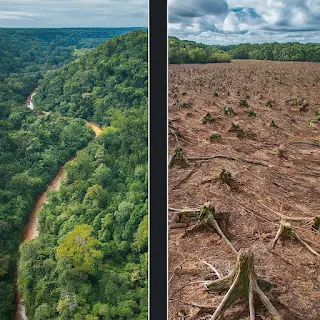The Hidden Cost: How Debt Can Damage Our Planet
We all know debt can be a burden on our wallets, but did you know it can also significantly impact the environment? The connection between financial obligations and environmental health might not be immediately obvious, but it's a complex issue with far-reaching consequences.
Debt and Developing Nations
One of the most concerning aspects is the pressure debt places on developing countries. These nations, often with limited resources, may be forced to exploit their natural resources like forests and minerals to generate quick cash and pay off creditors. This unsustainable resource extraction leads to deforestation, habitat destruction, and biodiversity loss.
Prioritizing Debt Repayment Over Environmental Protection
Debt can also force governments to prioritize short-term economic gains over long-term environmental investments. Environmental regulations and sustainable practices often require upfront costs, which might seem like a luxury when a country is struggling to meet debt payments. This can lead to the delay or even abandonment of crucial environmental initiatives.
The Paradox of Borrowing for Green Solutions
There is, however, a flip side to the coin. Debt financing can also be a tool for positive environmental change. Borrowing can fund the development of renewable energy sources like solar and wind power, or be used to invest in energy-efficient technologies. The key lies in responsible investment and ensuring the borrowed funds are directed towards truly sustainable solutions.
What Can We Do?
So, what can be done to address the environmental impact of debt? Here are a few ideas:
- Debt Relief for Developing Countries: International efforts to forgive or restructure debt for developing nations can free up resources for environmental protection.
- Sustainable Investment Strategies: Lenders and investors can prioritize projects that promote environmental sustainability alongside economic growth.
- Consumer Choices: By being mindful of our own consumption habits and supporting companies committed to environmental responsibility, we can indirectly influence the financial landscape.
The Road to a Sustainable Future
The relationship between debt and the environment is intricate, with both negative and potential positive consequences. By fostering a global conversation about this issue and implementing innovative solutions, we can navigate a path toward a future where financial stability and environmental well-being go hand in hand.
Further Reading:
- "Debt and the Environment: Global Issues
- "Understanding Environmental Debt: Unseen Consequences and Effective Solutions: Diversys



__.png)





Comments
Post a Comment